Turtle Tank Ideas: Designing a Happy Habitat
Introduction
So, you’re passionate about turtles, huh? Me too! Naturally like so many turtle owners, you are looking for turtle tank ideas. If you’ve recently decided to bring one into your home or are looking to revamp your current setup, you’re in for a treat. Designing the perfect turtle tank is a blend of art and science, and in this guide, we’re diving deep into everything you need to know.
Why A Proper Tank Matters
The Role of Natural Habitat
Ever taken a moment to picture where turtles live in the wild? Expansive wetlands, sunny basking spots, and plenty of hiding places. In captivity, our goal is to replicate this natural environment as much as possible. Why? Because a habitat close to their natural setting keeps them happy, healthy, and thriving.
Safety First: Avoiding Common Mistakes
The excitement of setting up a new tank might lead to some missteps. Overcrowding, wrong water pH, or inadequate lighting can all stress out your turtle. But don’t worry, we’ve got you covered with everything you need to know.
Key Elements of a Great Turtle Tank
Size and Space to accommodate your turtle tank ideas
When setting up an aquatic turtle tank, the paramount factor to consider is the size and space. Turtles, often perceived as small and manageable pets, grow over time, requiring a spacious environment to thrive. Every turtle enthusiast should remember the golden rule: 10 gallons of water for every inch of turtle shell length. This means that a turtle with a 5-inch shell will need a tank that holds at least 50 gallons of water.
But why stop there? Opting for a larger tank offers your turtle more freedom to swim, dive, and explore, closely mimicking their natural habitat. A spacious environment doesn’t just cater to their physical needs but also promotes a happier and healthier mental state. Additionally, a larger volume of water helps in maintaining a more stable and cleaner environment, diluting waste and reducing the frequency of water changes.
It’s not merely about aesthetics; it’s about replicating the vastness of nature in the confines of your home. Investing in a roomy tank also future-proofs your setup, accommodating your turtle’s growth and minimizing the need for constant upgrades. Always think long-term when assessing size and space; it’s an investment in your turtle’s well-being. Remember, in the world of turtle care, space is synonymous with grace!
Basking Area
One of the essential elements of an ideal aquatic turtle tank is the turtle basking area. Just as we humans enjoy lounging in the sun, aquatic turtles thrive when they have a dedicated space to soak up warmth and UV rays. Always ensure ample surface area for your basking turtle. Several options do exist such as a basking log, an above tank basking topper, or even a larger turtle basking platform. Creating an optimal basking zone is not just about aesthetics; it’s vital for their health.
The exposure to UVB light aids in the synthesis of vitamin D3, which in turn helps in the absorption of calcium. Without this, turtles can suffer from soft shell syndrome, a sign of potential health issues. When designing the perfect basking spot, consider factors like accessibility, size, and lighting. A well-structured basking platform should be easy for the turtle to climb onto and spacious enough for it to stretch out. Couple this with a high-quality UVB light source positioned at the right distance, ensuring your turtle gets those much-needed rays.
Additionally, it’s crucial to maintain the basking area’s temperature between 85°F to 90°F (29°C to 32°C). Overlook this, and you risk creating an environment where your turtle is less inclined to bask. In conclusion, when setting up or upgrading your turtle tank, prioritize establishing a top-notch basking area. It’s a simple step that significantly enhances the quality of life for your aquatic friend, ensuring they remain happy, healthy, and vibrant for years to come. Remember, a basking turtle is a blissful turtle!
Filtration Systems
When it comes to creating the perfect environment for your aquatic turtle, a robust filtration system is paramount. Why? Because turtles, unlike some of their aquatic counterparts, are notoriously messy creatures. From leftover food debris to their natural waste, the water in their habitat can quickly become a breeding ground for harmful bacteria if not properly treated. The right filtration system not only maintains the clarity of the water, ensuring your tank looks pristine and clear, but also ensures a safer, healthier environment for your shelled friend.
Think of this system as the heart of your aquatic turtle tank. It actively pumps out impurities, ensuring a continuous cycle of clean water. Key factors to consider when choosing a filtration system include the tank’s size, the number of turtles, and the specific species’ needs. Canister filters, with their multi-stage filtration process, are highly recommended for larger tanks due to their efficiency in both mechanical and biological filtration.
Moreover, the flow rate of the filter plays a crucial role; a good rule of thumb is selecting a filter that can handle 2 to 3 times the volume of your tank every hour. Lastly, always opt for a system that’s easy to clean and maintain. After all, a filtration system is your primary tool in ensuring that your aquatic turtle enjoys a clear, clean, and healthy habitat. When you invest wisely in this system, you pave the way for a thriving, long-lived turtle.
Lighting and Heating
When it comes to creating the perfect environment for your aquatic turtle, lighting and heating play an indispensable role. Aquatic turtles, like all reptiles, are ectothermic, meaning their internal temperature is governed by their surroundings. Proper heating ensures they maintain optimal metabolic rates, aiding digestion and overall health.
Ideally, an aquatic turtle tank should have a dual lighting system: UVA and UVB. UVA rays stimulate appetite, mating behavior, and other natural activities. UVB lighting, on the other hand, allows turtles to produce Vitamin D3, which in turn helps them absorb calcium, vital for healthy shell and bone development.
Additionally, while underwater heaters help maintain water temperature between the ideal range of 75-80°F (24-27°C) for most species, a basking spot with a heating lamp is essential. This spot replicates the warm sunlit patches turtles would naturally seek out in the wild, letting them dry off and soak in warmth. Selecting the right combination of lights and heaters is crucial. Energy-efficient LED lights and adjustable heaters equipped with thermostats can be perfect choices.
But remember, the exact requirements can vary based on your turtle species, so always research their specific needs. In essence, a well-balanced combination of lighting and heating doesn’t just make your turtle tank look good; it mimics the turtle’s natural habitat, ensuring they remain active, healthy, and thrive in their artificial home environment. Investing in quality equipment now can save you from potential health issues and vet bills down the line. After all, when your turtle’s home is a radiant, warm haven, you’ll not only have a happier pet but also a centerpiece that lights up the entire room!
Decor: More Than Just Aesthetics for Turtle Tank Ideas
An aquatic turtle tank’s decor is not just about aesthetic appeal; it plays a crucial role in the health and happiness of your shelled friend. Integrating natural elements, such as smooth river stones, driftwood, and aquatic plants, can replicate a turtle’s natural habitat, promoting mental and physical well-being. When choosing decor, ensure it’s non-toxic and free from sharp edges to keep your turtle safe.
A well-decorated tank provides turtles with vital hiding spots, basking areas, and stimuli, encouraging exploration and activity. Plus, with the right mix of functionality and design, your turtle’s abode can become a stunning focal point in any room. Remember, a harmonious blend of form and function in your turtle tank decor ensures a vibrant, healthy environment for your pet and a visual delight for you.
Popular Themes: Expanding your Turtle Tank Ideas
Inject some fun into your turtle’s home with these themes:
The Sunken Shipwreck
Incorporating the element of a shipwreck decor into an aquatic turtle tank is a brilliant fusion of aesthetic appeal and functional design. The rustic allure of sunken vessels not only adds a mysterious charm to your tank but also provides numerous hideouts and exploration avenues for your turtles. Such underwater relics are reminiscent of oceanic tales, creating a visually rich landscape for viewers and a stimulating environment for your shelled friends.
Look for safe, non-toxic materials, when selecting the perfect shipwreck pieces. Ensure that they are devoid of sharp edges, protecting the delicate shell and skin of turtles. Merging nature with nautical adventure, a shipwreck-themed aquatic turtle tank becomes an enchanting underwater kingdom, enhancing the ambiance of any space while catering to the natural instincts of its reptilian inhabitants. Opt for shipwreck decor, and watch your turtle’s habitat transform into a marine marvel!
Jungle Oasis
Creating an enchanting “Jungle Oasis” decor for your aquatic turtle tank requires an understanding of essential elements that mimic nature and captivate onlookers. Incorporate lush aquatic plants, like Amazon swords or Java ferns, which not only add verdancy but also provide hiding spots for your turtles. Vividly colored plants contrasted with dark rocks or driftwood create an alluring depth and layering effect, reminiscent of jungle riverbeds.
Add naturalistic water features such as cascading mini waterfalls, evoking the sounds of a serene rainforest. Don’t forget to include a shaded basking area, using broad-leaved plants or overhanging foliage. To tie the theme together, consider jungle-themed backgrounds showcasing dense forests or misty jungles, enhancing the depth and ambiance. By intertwining these elements, your aquatic turtle tank transforms into a breathtaking Jungle Oasis, harmoniously blending nature’s beauty with aquatic life.
Rocky Mountain Landscape
Creating an authentic Rocky Mountain Landscape decor for your aquatic turtle tank is a fantastic way to blend nature’s grandeur with your pet’s environment. By incorporating elements such as smooth river stones, slate platforms, and driftwood reminiscent of mountain terrains, you can craft an alpine aquatic paradise.
Such designs not only provide an aesthetic appeal but also offer functional benefits: the varied elevations mimic a turtle’s natural habitat, encouraging exploration and exercise. Furthermore, plants native to the Rockies, like dwarf hairgrass or java moss, can be integrated to further enhance the visual appeal and offer hiding spots.
By emulating the rugged beauty of the Rocky Mountains in your turtle’s tank, you ensure an environment that’s both visually stunning and rich in textures and terrains, fostering a more engaging and natural space for your shelled friend.
Turtle Tank Maintenance Tips
Cleaning and Water Quality
Maintaining pristine water quality in an aquatic turtle tank is paramount to ensuring your shelled friend’s longevity and well-being. Over time, turtle tanks can accumulate waste, uneaten food, and other debris that can foster harmful bacteria and disrupt the tank’s ecological balance. Regular cleaning, therefore, becomes non-negotiable.
Utilize a reliable aquarium filter designed for turtles, as these creatures produce more waste than typical fish. Periodic water changes, preferably once every two weeks, are essential to replace old water and replenish minerals. Always use a water conditioner to neutralize harmful chlorine and chloramines found in tap water before introducing it to the tank.
Keeping a vigilant eye on water parameters like pH, ammonia, nitrites, and nitrates, often gauged using a quality water testing kit, will further ensure an optimal environment for your turtle. Remember, a clean tank with balanced water conditions not only looks appealing but significantly contributes to the health and happiness of your aquatic pet. In the realm of turtle care, water quality isn’t just an aesthetic concern—it’s a lifeline.
Regular Inspections
Having lots of great turtle tank ideas is exciting! But regular inspections of your aquatic turtle tank equipment are paramount to ensure the safety and well-being of your shelled friend. Checking for equipment damage not only prolongs the life of your turtle’s habitat but also safeguards against potential risks.
Damaged heaters can cause temperature fluctuations, jeopardizing your turtle’s health, while faulty filters can lead to toxic buildup and poor water quality. Leaky tanks or cracks might not only result in water damage to your home but also stressful conditions for your pet.
It’s vital to remember that while turtles are resilient creatures, they thrive in a stable environment. To maintain this, consistently inspect all equipment – from lighting fixtures to basking platforms. By being proactive in detecting and addressing wear and tear, you can ensure a thriving, safe environment for your turtle, while also saving on potential costly repairs or replacements in the future. Regular equipment checks are a small but essential investment in the longevity and quality of your turtle’s life.
Conclusion
Having the right turtle tank ideas and nailing the important details are both an art and a journey. It’s about ensuring their comfort, health, and happiness. With the right knowledge and passion (which I can see you have!), your turtle will thrive. Dive in, have fun, and remember: a happy turtle is a lively turtle!
FAQs
- How often should I clean the turtle tank?
- At least once a month, but check regularly for water clarity and cleanliness.
- Can I add fish to my turtle tank?
- Yes, but ensure they are compatible species, and the tank is spacious enough.
- Do turtles need a land area in their tank?
- Absolutely! They need a basking spot to rest and absorb vital UV rays.
- What’s the ideal water temperature for turtles?
- It varies by species, but typically between 75-80°F (24-27°C).
- How big will my turtle get?
- It depends on the species, but ensure your tank can accommodate their growth when planning out your turtle tank ideas.

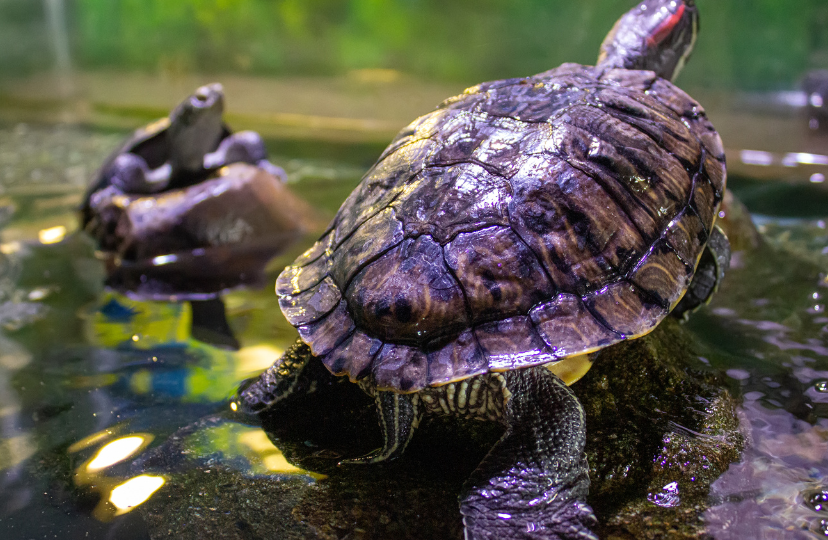
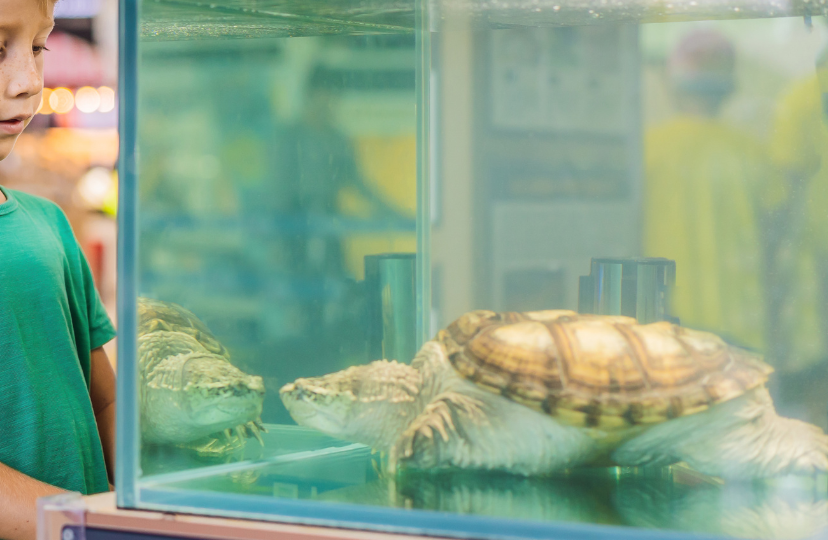
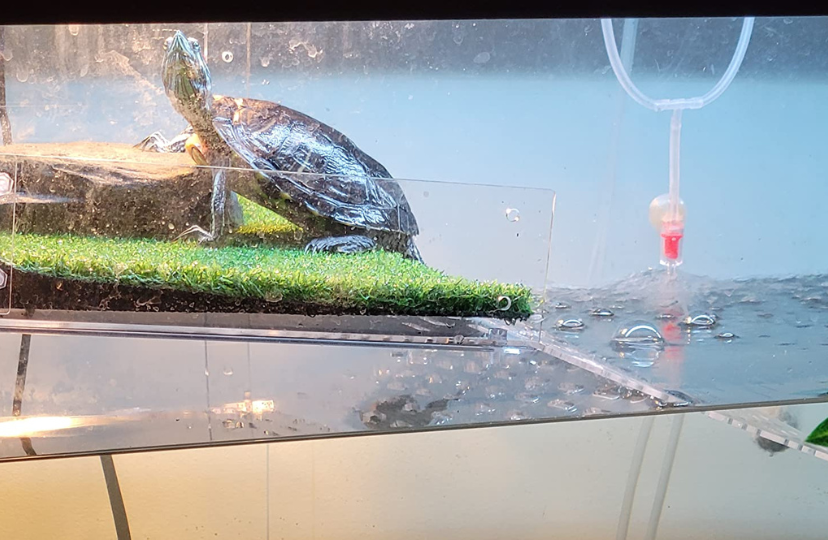
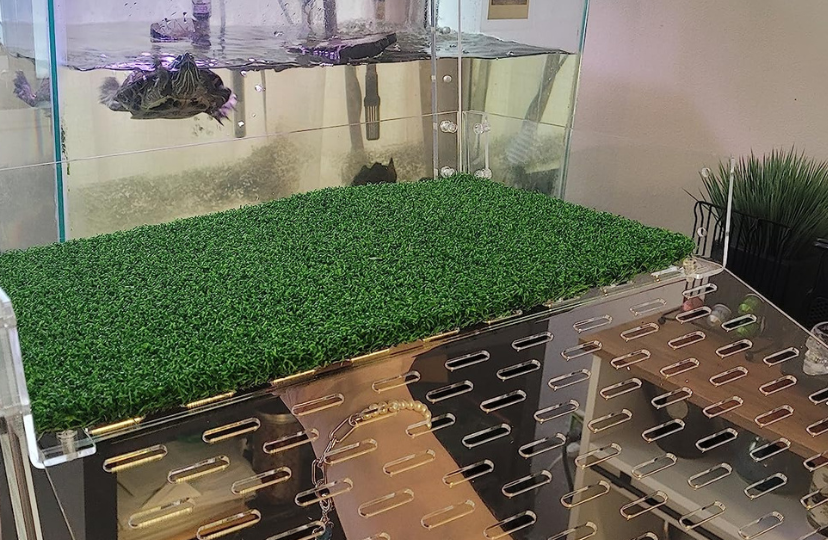
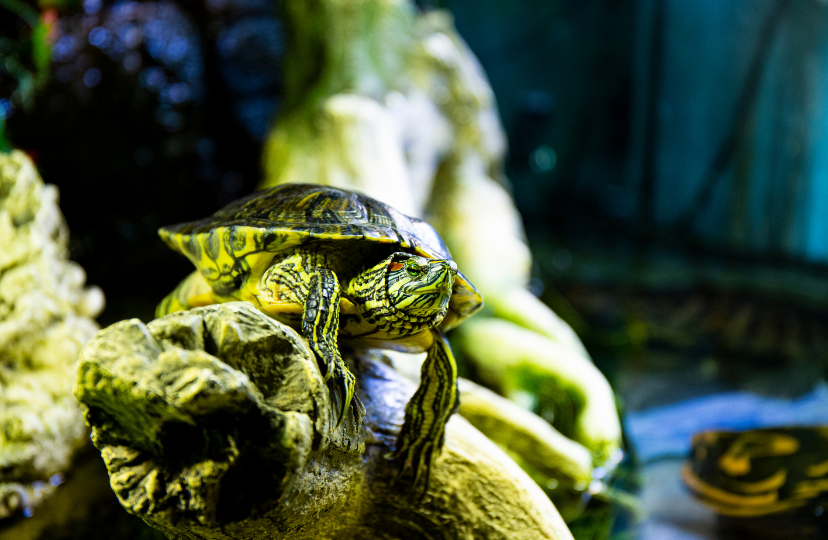
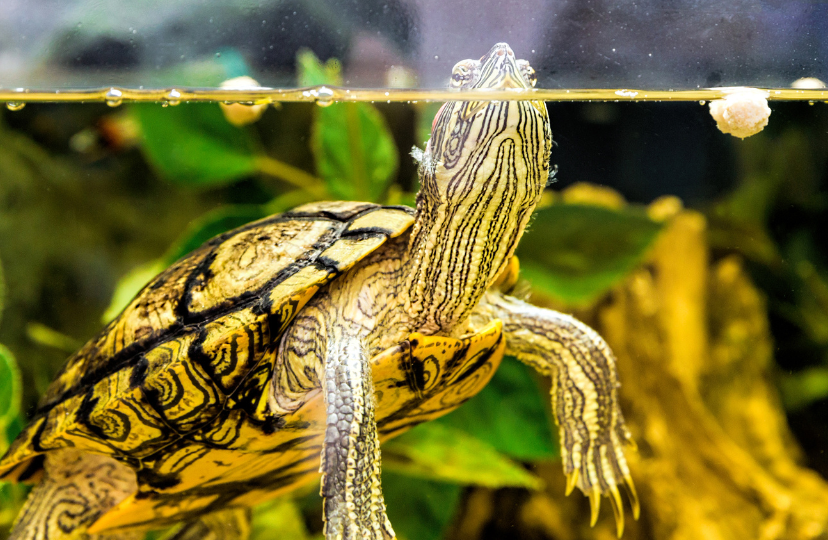
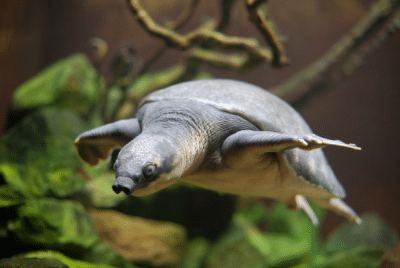
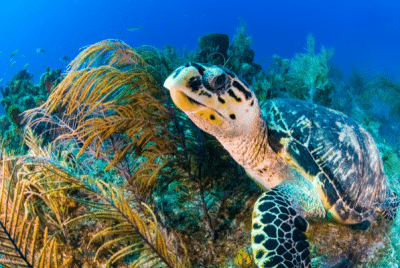

Comments are closed.